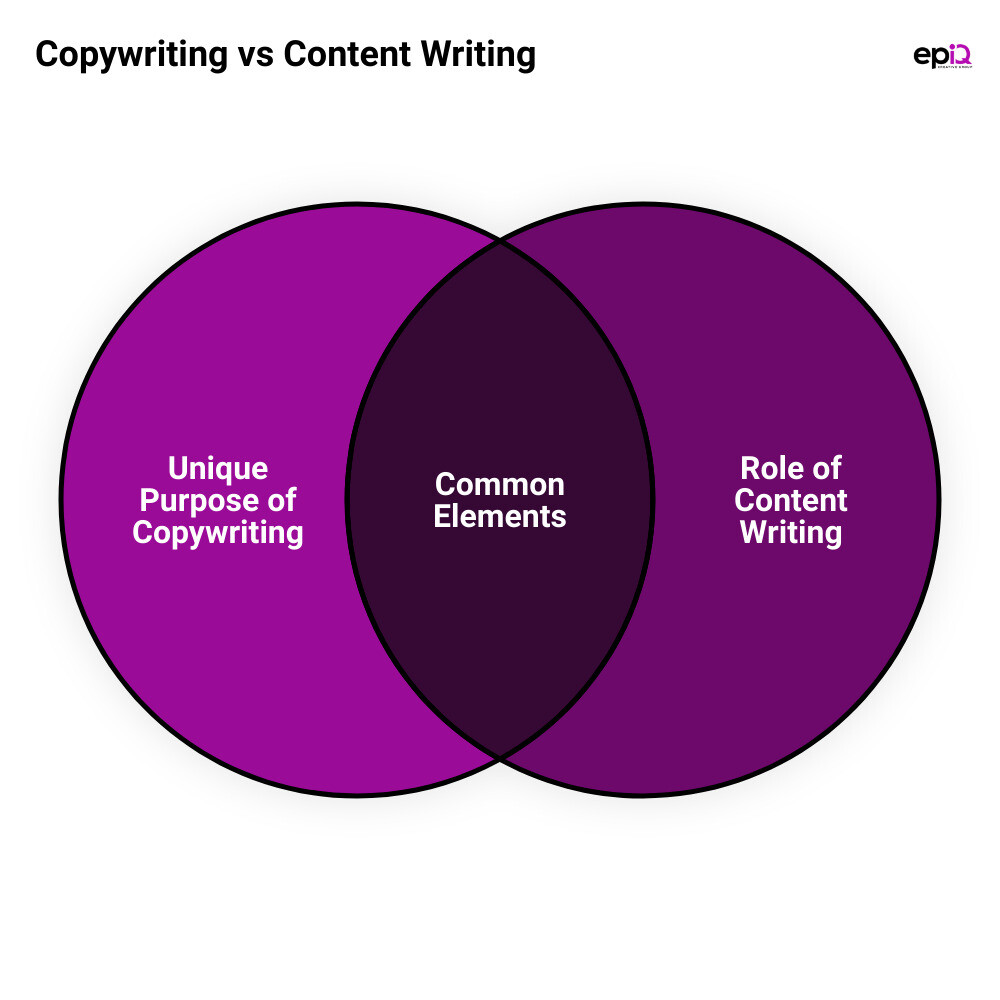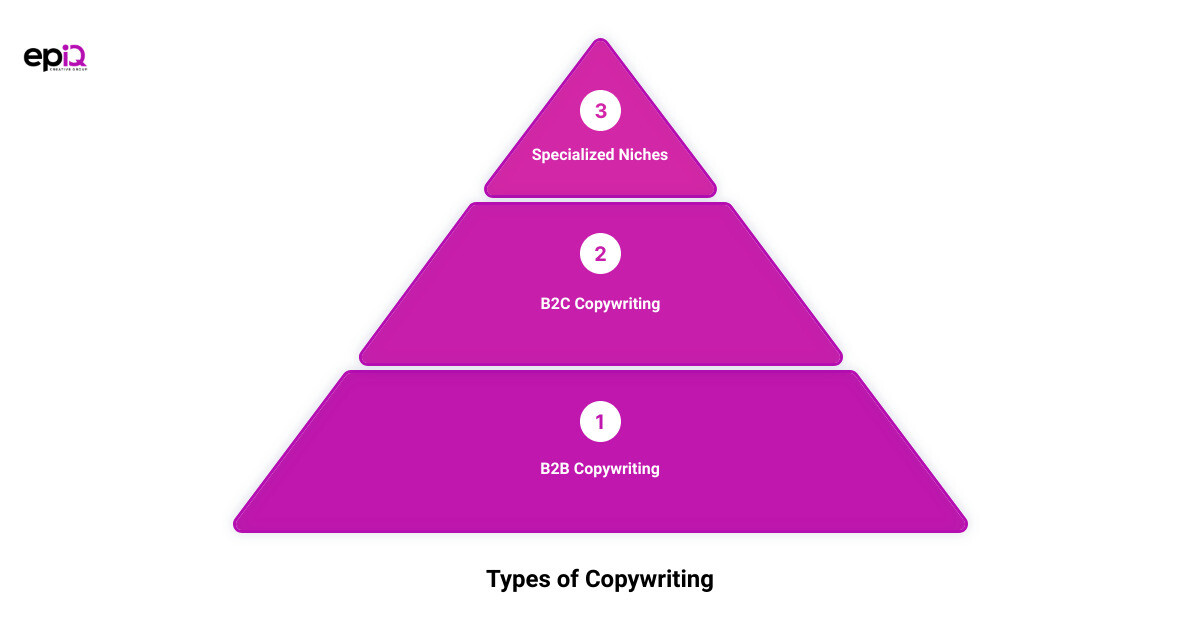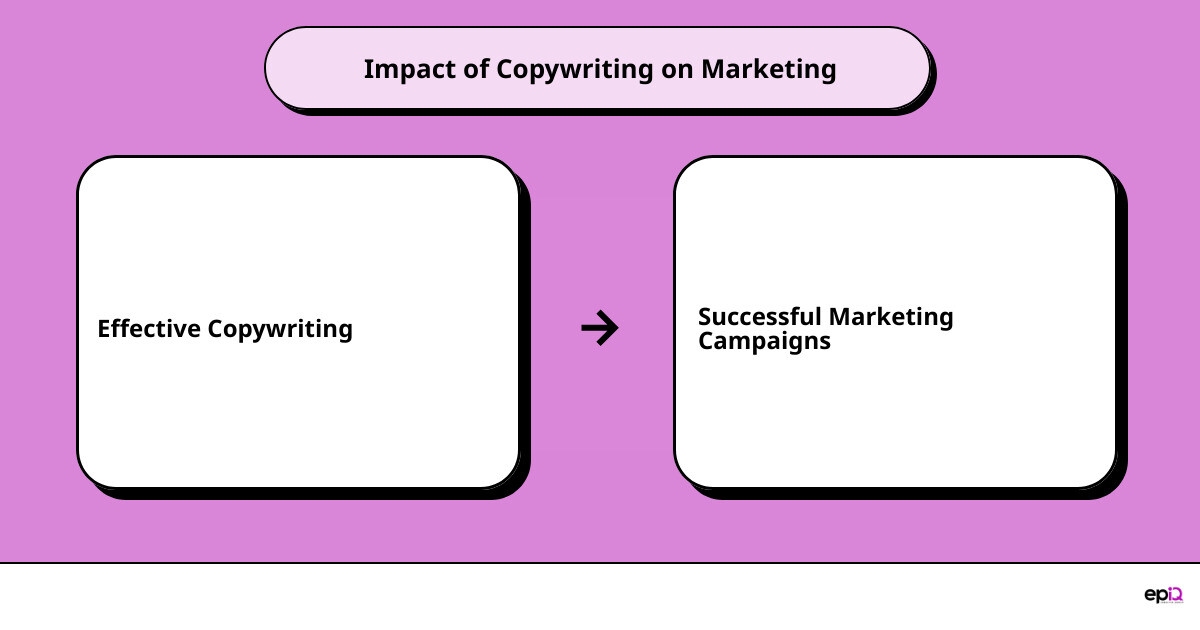Introduction: What is Copywriting in Simple Words?
If you’ve ever felt a sudden urge to purchase a product after reading a compelling email, or found yourself signing up for an event thanks to a captivating social media post, you’ve been influenced by the craft of copywriting. Copywriting, in simple terms, is a content production strategy that aims to persuade the reader to take a specific action. Be it to buy a product, subscribe to a service, or join a cause, the ultimate goal of copywriting is to generate conversions and sales by arousing interest in the reader.
Copywriting is more than just a blend of words; it’s an art of influencing through strategic storytelling. A copywriter must think carefully about the persuasive character of their content, using psychological triggers and an understanding of consumer behaviors to craft a message that resonates with the audience. This is what sets copywriting apart from general content creation.
In today’s digital era, copywriting has evolved beyond traditional print advertising and now extends to websites, social media, emails, and more. It plays a crucial role in digital marketing strategies, capturing the attention of the target audience, building brand awareness, and driving higher-quality leads.
However, the rise of AI technology is now reshaping the landscape of copywriting. Sophisticated AI systems are being designed to produce high-quality content, offering a new frontier in content creation that can help brands achieve consistency, save time, and increase ROI.
Whether you’re a business leader looking to elevate your brand or a marketer seeking to engage your audience effectively, understanding the power and potential of copywriting is essential. So, let’s dive deeper into the world of copywriting and explore how it can transform your marketing approach.

The Role of a Copywriter: More Than Just Writing
Just as a chef is more than someone who cooks, a copywriter is more than an individual who writes. The role of a copywriter is a multifaceted one, requiring a blend of creativity, strategic thinking, and a deep understanding of the audience’s needs and desires.
The Diverse Responsibilities of a Copywriter
A copywriter’s work begins long before they put pen to paper—or fingers to keyboard. It starts with meticulous research. This can involve sifting through a sea of data, gleaning insights from customer feedback, and combing through online forums and discussions to understand the current conversation around a topic or product. The copywriter also has to identify the most relevant keywords, locate unique details, and even explore the product or service firsthand to bring it alive for the audience.
Once the research is compiled, the magic of writing begins. But it’s not a one-and-done process. It’s a cycle of writing, editing, and refining until the copy is concise, compelling, and persuasive. But the work doesn’t end there. After the writing is done, analyzing the performance of the copy and making necessary adjustments is another crucial part of a copywriter’s role.
The Art of Persuasion: How Copywriters Influence Action
The heart of copywriting lies in the art of persuasion. It’s not about using fancy words or complex jargon. It’s about crafting a message that resonates deeply with the audience, prompting them to take action—be it clicking a link, signing up for a free trial, making a purchase, or even scheduling a consultation.
The tone of voice is a critical tool in a copywriter’s arsenal. It’s not just about what is said, but how it’s said. A copywriter’s tone can be motivational, pushing readers to take action. It can also be educational, explaining why a product or service is the best solution to a problem. In every piece of copy, there’s a strong call to action (CTA), a powerful push that nudges the audience to respond now, not later.
The goal of copywriting is not just to inform or entertain, but to persuade. It’s about creating a compelling narrative that highlights a brand’s unique strengths, distinguishes it from competitors, and ultimately, convinces the audience to take a specific action.
So next time you come across a piece of copy that makes you want to click, buy, or sign up, remember there’s a copywriter behind it, skillfully wielding the art of persuasion.

Copywriting vs Content Writing: Understanding the Difference
In the realm of content production and marketing, copywriting and content writing often get tangled up, leading to confusion. These two types of writing, while related, serve distinct purposes and use different strategies to communicate with the audience.
The Unique Purpose of Copywriting
At its core, copywriting is a strategy focused on persuasion. It’s about prompting readers to take a specific action, whether that’s clicking on a link, accepting a free trial, or making a purchase. Copywriting is the engine that drives conversions and sales, using a deliberate and motivating tone of voice. It’s the strong call to action in a sales email, the convincing text on a product page, or the compelling headline in a PPC ad.
Copywriting is not just about selling products or services, but also about selling ideas, emotions, and experiences. It’s about strengthening a brand’s messaging and image, and making it stand out from the crowd.
How Content Writing Complements Copywriting
On the other end of the spectrum, content writing is designed to inform, educate, or entertain. It’s a slower approach, subtly nurturing trust and loyalty with the audience. Content writing aims to address the audience’s needs and interests, providing value through informative blog posts, in-depth whitepapers, engaging infographics, or inspiring webinars.
Content writing is a strategic process. It’s not about churning out random topics, but about planning content that aligns with the brand’s objectives and resonates with the audience’s concerns and interests. It’s about creating original and diverse content that stands out, engages different segments of the audience, and ultimately, keeps them coming back for more.
While content writing may not incorporate a hard sell like copywriting, it plays a crucial role in creating a comprehensive and effective marketing strategy. By educating the audience and building rapport, it creates a fertile ground where the seeds of persuasion sown by copywriting can take root and grow.
In essence, copywriting and content writing are two halves of a whole, each playing a vital role in the broader content marketing strategy. While the persuasive power of copywriting turns interest into action, the informative and engaging nature of content writing cultivates that interest in the first place. Used in tandem, they can help brands effectively communicate their message, connect with their audience, and drive conversions.

The Expanding World of Copywriting: From Print to Digital
The ever-evolving landscape of marketing has greatly impacted the world of copywriting, expanding its horizons beyond traditional print mediums to the digital realm. Let’s delve into this transformation and explore how copywriting has adapted to these changes.
Traditional Forms of Copywriting: Billboards, Brochures, and More
The roots of copywriting are deeply embedded in traditional advertising forms like billboards, brochures, and direct-mail packages. In fact, as far back as 1897, companies recognized the persuasive power of well-written copy in their ads, such as the ad for Van Camp’s Boston Baked Pork and Beans in The Ladies’ Home Journal. This long-standing tradition continues today, with 56% of U.S. companies still employing direct-mail packages as an integral part of their marketing strategy, and many planning to maintain or even increase this usage.
These traditional forms of copywriting required the ability to capture the reader’s attention quickly and convey a compelling message succinctly. Copywriters needed to master the art of persuasion, crafting enticing headlines and engaging content that induced the desired response from potential customers.
Digital Copywriting: Websites, Social Media, and SEO
With the advent of the internet and the explosion of digital marketing, the scope of copywriting has significantly broadened. Today, 90% of all organizations use online content marketing, and nearly 70% actively invest in it. The application of copywriting in the digital realm encompasses websites, social media posts, emails, blog articles, and more.
In this new age, copywriters aren’t just crafting persuasive content; they’re also navigating the complex world of search engine optimization (SEO). They must strategically place keywords and consider semantic phrases to achieve higher rankings in search engine results. Writing for SEO requires a delicate balance between creating content that appeals to human readers and content that satisfies search engine algorithms.
Moreover, the rise of AI in copywriting has brought about a new wave of possibilities. Despite some limitations, AI has the potential to revolutionize content creation, with its ability to generate content that can rival even the best human copywriters. This doesn’t mean that AI will replace human copywriters completely. Instead, this technology can be used to enhance their work, making their content even more targeted and effective.
The world of copywriting is continuously evolving, shaped by technological advancements and changing consumer behaviors. Despite these changes, the core principle of copywriting remains the same: to use the power of words to persuade and influence action. As long as there are products to sell and stories to tell, there will always be a need for skilled copywriters. Whether in print or digital form, great copywriting is a cornerstone of effective marketing.

The Different Types of Copywriting: B2B, B2C, and Beyond
In the wide marketing arena, copywriting takes on various forms, each with its unique goals, audiences, and styles. Let’s delve into two common types of copywriting: Business-to-Business (B2B) and Business-to-Consumer (B2C).
B2B Copywriting: Selling to Businesses
B2B copywriting is a specialized form of writing where products or services are sold to other businesses. This type of copywriting is all about demonstrating value. It requires a formal and clear tone, and the content must be engaging enough to captivate businesses exploring various vendors before making a buying decision. The copywriter needs to articulate the benefits of the product or service, often using marketing materials like e-books, infographics, press releases, web pages, email sequences, scripts for podcasts, and webinars.
B2C Copywriting: Connecting with Consumers
On the other hand, B2C copywriting aims to sell products and services directly to end consumers. The goal here is to persuade customers to take prompt action. The content is more direct and often emotional, focusing on the benefits the consumer will receive from the product or service. The language is less formal and more conversational, using shorter sentences and paragraphs, bulletin points, and subheads to highlight the product’s features. Examples of B2C businesses include supermarkets, online stores, and brick-and-mortar stores.
In both B2B and B2C copywriting, understanding the target audience and their needs is vital. The copywriter needs to craft messages that resonate with the audience and prompt them to act. Whether you’re writing for a business or a consumer, the objective remains the same: to persuade the reader to take a desired action.

How to Become a Successful Copywriter: Skills, Niches, and Marketing
Just as every good story has its hero, in the realm of persuasive content, a successful copywriter is the unsung hero. Whether it’s for B2B or B2C, their craft lies in their ability to weave words that not only resonate with the audience but prompt them to act. But what does it take to become such an influential word wizard? Let’s delve into the essential skills, niche specialization, and marketing tactics that pave the way to a successful copywriting career.
Essential Skills for a Copywriter
The art of copywriting calls for more than a knack for words. It’s an intricate blend of several key skills that aid in crafting compelling messages. A proficient copywriter needs to have a firm grasp of the language, an understanding of the audience, and the ability to write clear and engaging content. Equally crucial is the ability to conduct thorough research, as this forms the foundation of any persuasive copy.
A copywriter must be able to take complex ideas and distill them into simple, digestible content that resonates with the reader. This requires a deep understanding of the 3 fundamental rules of selling: knowing the product, knowing the audience, and knowing how to bridge the gap between the two.
Choosing a Niche: Specializing in Your Industry
While copywriters can work across various industries, specializing in a specific niche can give you an edge. This could be a field you’re already familiar with or one where you’re willing to invest time in learning. Understanding your industry helps you to craft more effective messages and build credibility with your clients.
Specializing in a niche also allows you to stay updated with the latest trends and changes, giving you an advantage in the competitive market. Whether you choose to focus on financial, technology, health-related, or any other industry, remember that the key lies in understanding your brand voice, messaging, and the benefits of your products or services.
Marketing Yourself: Finding Opportunities and Building a Portfolio
A successful copywriting career isn’t just about writing; it’s about marketing yourself too. How do you showcase your skills and attract clients that value your work? One of the best ways is by building a solid portfolio that demonstrates your writing ability and range.
Leverage platforms like job boards and LinkedIn to find opportunities. Networking, warm email prospecting, and inbound marketing are also effective strategies for gaining visibility. Moreover, becoming part of a community, or “finding your tribe,” can provide valuable support and opportunities to collaborate.
As you venture into the world of copywriting, remember that success doesn’t happen overnight. It’s a journey that requires continuous learning, adaptation, and growth. But with determination and the right mindset, you can master the art of persuasive content and make your mark as a successful copywriter. So, are you ready to unleash your potential and step into the vibrant world of copywriting?

The Impact of Copywriting on Marketing and Branding
With the power to manipulate language and influence emotions, copywriting is a major driving force in marketing and branding. Through persuasive, engaging content, a single piece of copy can spark interest, foster trust, and even propel a potential customer to action. Let’s explore the impact of copywriting on marketing and branding in more depth.
How Copywriting Drives Marketing Campaigns
Copywriting is the lifeblood of effective marketing campaigns, transforming abstract ideas into compelling narratives that resonate with audiences. When done right, copywriting can effectively communicate the value of a product or service, highlight its unique selling points, and convince potential customers of its relevance to their needs.
A strong copy can be a defining factor in the success of marketing campaigns, from email marketing to social media posts, webpages, and advertisements. According to sources, AI copywriting is already here and has the potential to write content better than even some of the best marketers out there. This means that the future of marketing campaigns is not just dependent on human creativity but also on technological advancements.
The Role of Copywriting in Building a Brand’s Story
Beyond marketing campaigns, copywriting plays a crucial role in building and maintaining a brand’s story. A brand’s story is not just about its history or achievements; it’s about the values, mission, and vision that define its identity. Copywriting helps communicate this story in a way that connects with the audience on an emotional level.
Every piece of copy, from website content to social media posts and email newsletters, contributes to the overall narrative of the brand. Consistency in tone, style, and message across all these platforms reinforces the brand’s identity and builds trust with customers.
Moreover, a compelling brand story can set a business apart from its competitors, making it more memorable and relatable. As noted, storytelling can move consumers from one step in the customer journey to the next, making it a powerful tool in the hands of a skilled copywriter.
In conclusion, copywriting wields enormous influence over marketing and branding strategies. It has the ability to drive successful marketing campaigns and foster a strong brand identity. As the landscape of copywriting evolves with advancements like AI, the importance of crafting persuasive, engaging content remains constant. It’s not just about selling a product or service; it’s about connecting with audiences and building lasting relationships.
Conclusion: The Power of Copywriting in the Digital Age
From crafting catchy headlines to stirring up a sense of urgency in readers, the magic of persuasive content unfolds in the realm of copywriting. The rise of digital platforms has only amplified its impact, making it an indispensable tool in the digital age.
In the world of digital marketing, copywriting has taken on a more significant role, with the art of persuasion being used to convince readers to take specific actions. Whether it’s clicking on a link, making a purchase, or subscribing to a newsletter, the power of words can influence behavior and drive conversions.
Copywriting, however, is not only about selling. It’s also about establishing a connection with the audience, building trust, and fostering a relationship. The traditional role of a copywriter has evolved to not only writing persuasive content but also creating a brand voice, remaining consistent across multiple platforms, and even adapting to the use of AI in content creation.
AI copywriting, as mentioned earlier, is already making waves in the industry. According to epIQ Creative Group, AI can create content that is more concise, grammatically correct, and aligned with a brand’s message. It can help businesses save time, reduce costs, and achieve a higher return on investment through better engagement and conversion rates.
While the introduction of AI in copywriting may seem intimidating, it doesn’t replace the creativity and intuition of a human copywriter. Instead, it complements these skills, automating certain tasks and allowing copywriters to focus on crafting compelling narratives and strategies.
The digital age brings with it a plethora of opportunities for copywriters. With the right set of skills, a clear understanding of their audience, and a knack for creativity, they can create content that not only sells but also tells a story and connects with people on a deeper level.
As we move further into the digital age, the power of copywriting will continue to shape the way brands communicate with their audiences. It’s an exciting time to be a part of this evolving industry. Embrace the changes, harness the power of words, and make your mark in the digital landscape.
About epIQ Creative Group: Your Partner in Effective Copywriting and Design
As your trusted partner, we, at epIQ Creative Group, are committed to providing comprehensive marketing solutions that include effective copywriting and design services. Navigating the marketing terrain can be overwhelming. Still, our expert team is here to guide you every step of the way, ensuring your brand resonates with your target audience and attracts potential customers.
Our Services: From Design to Copywriting and Beyond
If an image speaks a thousand words, imagine what a strategic design, combined with persuasive copywriting, can do? Our team of skilled designers and writers work in tandem to create visually appealing and powerful content that communicates your brand’s message and values effectively.
We specialize in creating high-quality, relevant, and SEO-optimized content, from blog posts and podcasts to videos. Our design services extend to your website, social media graphics, and email marketing templates. We don’t just create content; we create content that bridges the gap between your customers’ interests and the products or services you offer.
The Quantum Circle™ Program: Monthly Solutions for Your Marketing Needs
For small businesses seeking a comprehensive solution to inbound marketing, we offer the Quantum Circle™ program. This proprietary system ensures accelerated sales and revenue scaling by eliminating guesswork and saving you time and money. With Quantum Circle™, you gain direct access to growth marketers and regular progress reports, ensuring transparency and agility in your inbound marketing efforts. It’s a cost-effective solution designed to provide a substantial return on your investment.
Turning Videos into Sneak-Peak Content: Giving Your Events the Buzz They Deserve
In today’s digital age, video content is king. At epIQ, we recognize the power of video in creating buzz for your events. Whether it’s a product launch, a company milestone, or a community celebration, we can turn your videos into sneak-peak content that drives engagement and anticipation.
Our team is committed to helping your brand shine through creative and strategic marketing solutions. Explore our services and see how epIQ Creative Group can help you elevate your brand and grow your business.
